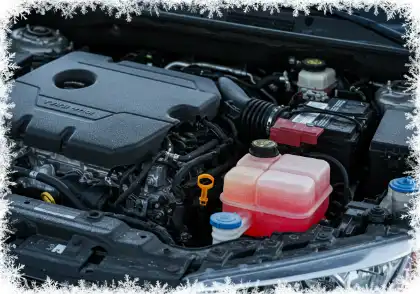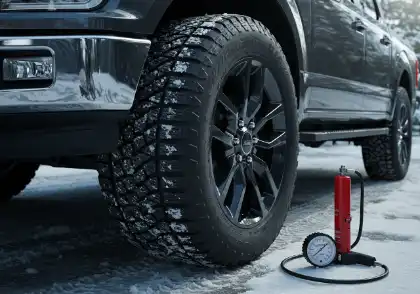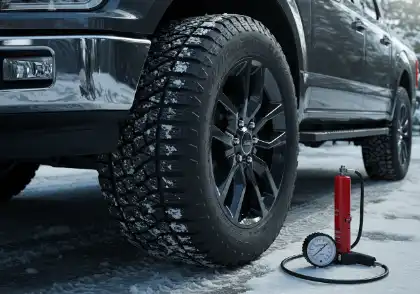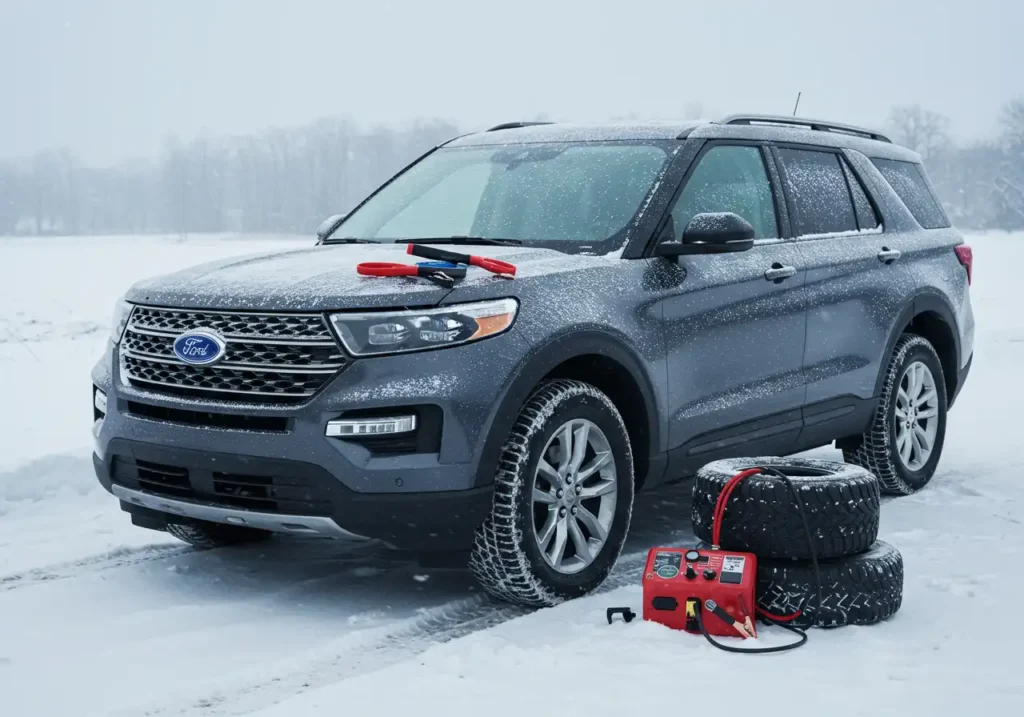Winter brings challenges that can impact your vehicle’s reliability, safety, and performance. Cold temperatures, snow, and icy conditions put extra strain on every part of your car—from the battery to the tires. Neglecting winter maintenance practices increases the risk of breakdowns and costly repairs at the worst possible times.
This blog about the best winter maintenance practices for your vehicle focuses on proactive steps to keep your car running smoothly during harsh weather. Key tasks for effective vehicle care in winter include:
- Regularly checking oil, coolant, and antifreeze levels
- Inspecting tire pressure and tread depth
- Ensuring all lights are operational for visibility
- Replacing wiper blades with winter-ready alternatives
- Testing battery strength against cold starts
Staying ahead with these essential winter maintenance practices helps protect your investment and keeps you safer on slippery roads. Each step prepares your vehicle for whatever winter throws your way—delivering peace of mind mile after mile.
1. Regular Maintenance Checks
Regular maintenance checks are the backbone of winter vehicle care.
- Checking oil and coolant levels: Ensuring that your vehicle’s oil and coolant levels are adequate is crucial. Low oil levels can lead to engine friction and damage, while insufficient coolant can cause your engine to overheat or freeze in cold conditions.
- Inspecting and replacing air filters: A clean air filter improves fuel efficiency and helps your engine run smoothly. Replacing a clogged air filter allows for better airflow, which is essential for optimal engine performance.
- Monitoring tire pressure and tread depth: Tire pressure tends to drop with falling temperatures, affecting traction and fuel efficiency. Check tire pressure monthly and ensure it meets the manufacturer’s recommended levels. Additionally, inspect tread depth to ensure your tires can grip icy or snowy roads effectively.
- Ensuring all lights are functional: Visibility is often compromised during winter due to shorter daylight hours and adverse weather conditions. Make sure all headlights, brake lights, turn signals, and hazard lights are operational to enhance visibility and safety.
2. Scheduled Maintenance Tasks
Oil change, tire rotation, and vehicle waxing are core components of a winter maintenance schedule. Each task targets a specific aspect of your vehicle’s resilience against harsh winter conditions.
Oil Change and Oil Filter Replacement
- Engine oil thickens in cold weather, which can strain your engine.
- Manufacturers recommend following specific oil change intervals—often every 5,000 to 7,500 miles, but always refer to your owner’s manual for exact timing.
- Fresh oil ensures optimal lubrication and engine protection, while a new filter keeps contaminants from circulating during cold starts.
Tire Rotation for Even Wear
- Rotating tires distributes wear evenly across all four tires.
- Winter driving places unique demands on tires; front tires typically wear faster due to steering and braking.
- Regular rotation (every 6,000 to 8,000 miles) helps maintain consistent tread depth, supporting traction on slippery roads.
Waxing Your Vehicle
- Road salt, sand, and moisture can quickly damage vehicle paint during winter.
- Applying a high-quality wax before the first snow acts as a barrier against these elements.
- Waxing twice a year—ideally before and after winter—helps prevent corrosion, rust spots, and paint degradation.
By prioritizing these scheduled tasks, you help your vehicle withstand winter’s most punishing effects.
3. Additional Seasonal Checks

Staying ahead with seasonal adjustments is one of the best winter maintenance practices for your vehicle. Cold temperatures introduce unique challenges that demand targeted attention.
Windshield Wipers
Swapping standard wipers for winter blades makes a visible difference. Winter-specific wiper blades use robust rubber compounds and reinforced frames, allowing them to clear away heavy snow and ice without cracking or streaking. Clear visibility during snowstorms or slushy commutes keeps you safer.
Battery Performance
Cold weather reduces battery capacity, often exposing weak batteries at the worst moment. Testing your battery’s voltage and inspecting terminals for corrosion helps prevent unexpected breakdowns. Batteries older than three years warrant extra scrutiny during the winter months.
Winter Tires
All-season tires lose flexibility in freezing temperatures, decreasing traction on snow and ice. Winter tires are engineered from softer rubber compounds and feature deeper treads, providing superior grip and shorter stopping distances on icy surfaces. In regions with heavy snowfall or frequent freeze-thaw cycles, dedicated snow tires can make travel significantly safer.
Antifreeze Levels
Engine coolant mixed with the right ratio of antifreeze guards against freezing in low temperatures. Using a hydrometer or test strips ensures your coolant mixture remains effective through deep freezes, preventing catastrophic engine damage.
Adopting these targeted checks addresses vulnerabilities specific to winter driving conditions, reinforcing your vehicle’s reliability as temperatures drop.
4. Benefits of Winter Maintenance Practices
Adopting the best winter maintenance practices for your vehicle delivers measurable benefits across several key areas:
Vehicle Longevity

Consistent maintenance—such as oil changes, tire rotations, and fluid checks—directly contributes to a longer vehicle lifespan. By keeping engine components properly lubricated and protected from harsh winter elements, you reduce wear and tear that leads to premature breakdowns.
Safety on Winter Roads
A well-maintained car is safer to drive in ice and snow. Reliable brakes, optimal tire traction, and clear visibility from functional lights and wipers all reduce the risks associated with winter driving. Drivers who prioritize these checks experience fewer incidents caused by mechanical failure or poor handling in slippery conditions.
Cost-Effective Measures
Addressing issues early—like low antifreeze levels or battery weakness—prevents expensive repairs in the future. A small investment in routine inspections often saves hundreds or thousands by avoiding major component failures.
“Preventive maintenance is always less expensive than emergency repairs.”
Focusing on these practices gives you peace of mind. You know your vehicle is prepared for whatever winter throws your way, and you’re making smart decisions that protect both your car’s value and your own safety.

